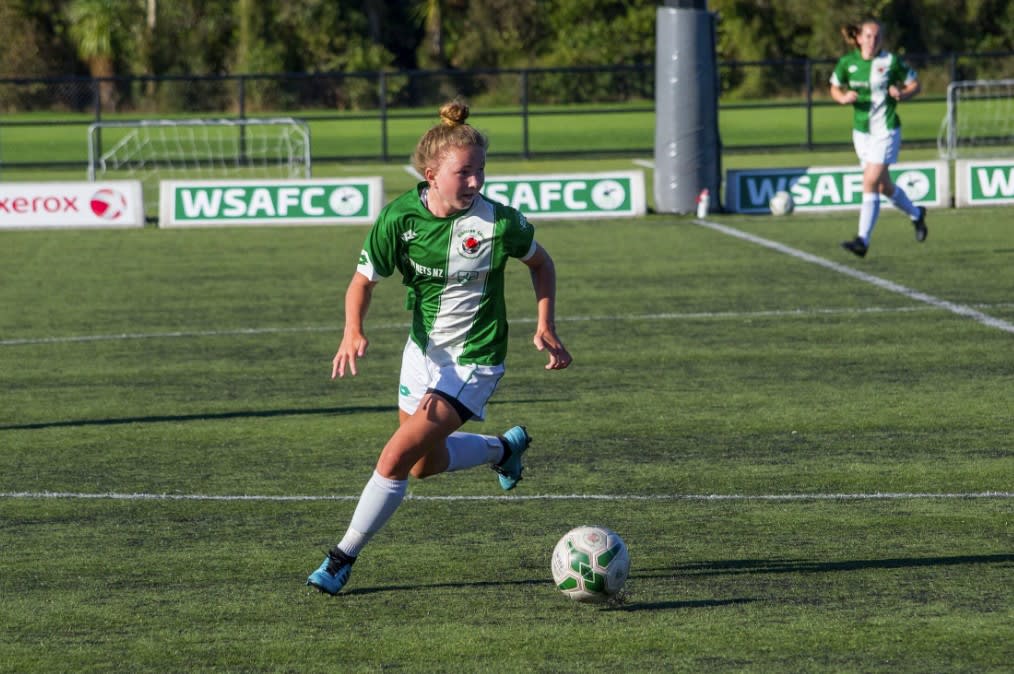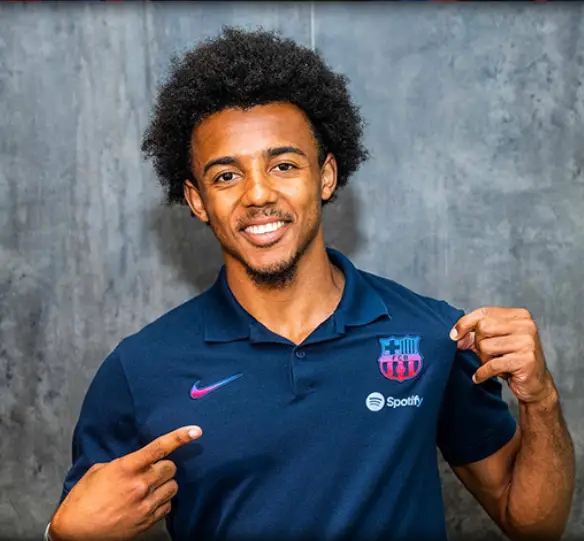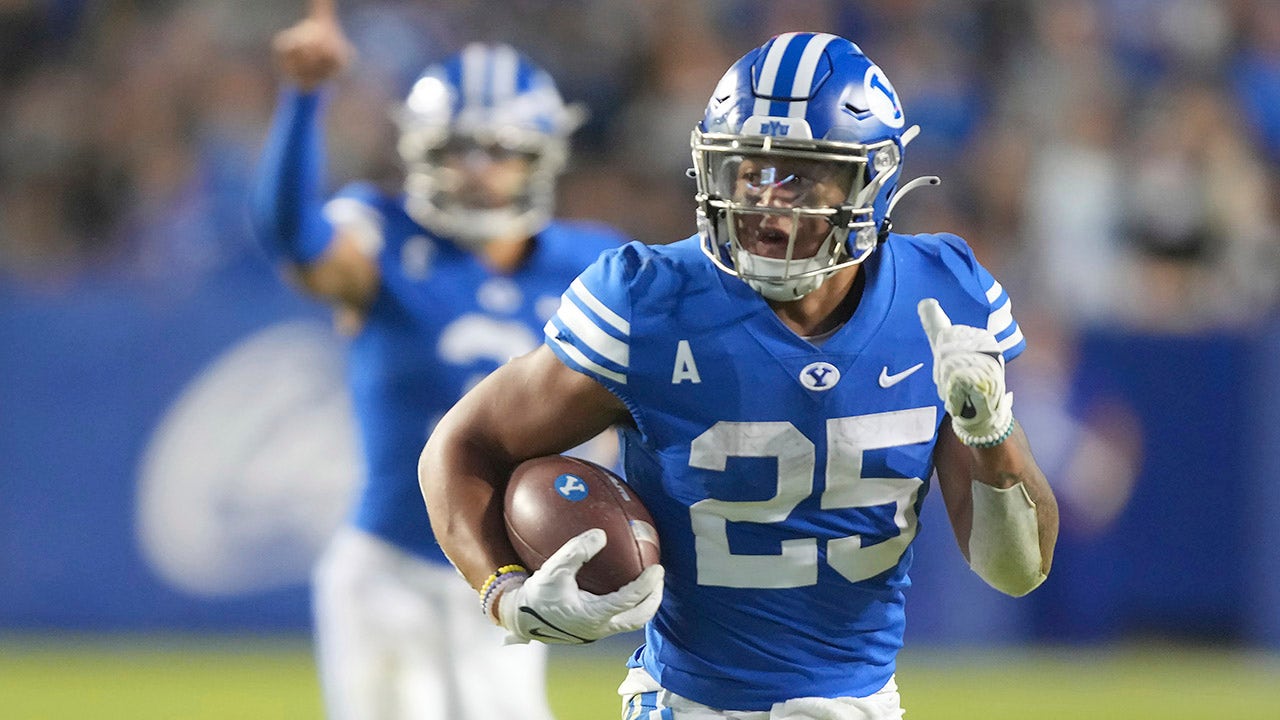Women Footballers Battle the Curse of the ACL
LockerRoom
Busted knees and reconstructions are on the increase for young women – and one women’s football team knows the pain of knee ligament injury all too well, having five players afflicted recently.
The Hibiscus Coast Northern Region Football premier league side’s players ruptured their Anterior Cruciate Ligaments (ACLs). Here, they tell Peter Thornton about their recovery and resilience, and how the team prepares differently now.
Summer Carkeek is lying face down on the football turf in utter disbelief.
Six months after coming back from rupturing her ACL in her right knee, the 17-year-old from the Hibiscus Coast women’s football team is grasping at her left knee and rolling in pain.
She knows what she has done.
“I couldn’t believe it,” the 19-year-old says of the memory.
“I felt it go. I was lying on the field, and I just knew at that moment. I was in total disbelief. After everything I had been through to get back, I didn’t want to face the reality that I had that same journey all over all again.”

Carkeek says her coach Asher Trotter knew she had ruptured her ACL again, but he was telling her; ‘it’ll be ok’. All the emotions came back and hit her like a wave. Carkeek broke down.
“I couldn’t help but cry when I got the news that I had done the ACL on my left knee,” she says.
“It was a tough moment because I know how hard it is to come back from this injury.”
Carkeek shook off that feeling. Sitting on the physiotherapist’s bed, she decided her rehab ‘starts now’.
“I kept telling myself: ‘I have done this before, and I can do it again’. I had one moment of being very emotional and upset and then I had to leave that feeling. I knew I had to be more determined and singled-minded than ever before.”
An alarming rate of ACL reconstructions
ACL injuries are common in sports and women are more likely to suffer this injury than men.
The minimum time for an ACL reconstruction rehabilitation is usually nine months. It can take 12 months to get back to playing a game at pre-injury levels.
A review of ACL reconstructions saw the greatest increase in females aged 15-19 years, with the rate of reconstructions increasing by 120 percent between 2009 – 2019.
The numbers are improving, but there is still work to do. In 2022 ACC accepted 157 claims for ACL football-related injuries. These injuries came for $5.3 million to help people recover.
The Hibiscus Coast women’s team has had five players rupture their ACLs in the past few years.
“It’s been challenging for our team,” says Stacey Martin, the Hibiscus Coast captain who was one of the five players to rupture her ACL.
The 27-year-old has played a leading role in supporting her teammates in their recovery.

“I reassured them of the process they were going through and helped them with their mental struggles. I was there to talk if they needed me. It’s a lonely process coming back from this injury.”
The personal cost of a serious injury
It’s late December and a beautiful day on the Whangaparaoa Peninsula. Carkeek’s family is getting ready for a fun day at the beach, but she’s lying on the couch and watching TV.
When Carkeek ruptured her ACL in her right knee, the first injury, she also badly damaged her meniscus. She was non-weight bearing on crutches for six weeks and leaned on her Mum heavily for support.
“I couldn’t do anything, and it had a huge impact on my life.”
Martin had a similar experience.
The former Whangaparaoa College student ruptured both her ACL and ALL (anterolateral ligament), and also had a meniscal (knee cartilage) tear.
In her recovery, Martin damaged her meniscus and had to have a second operation.
She remembers the pain of having to learn how to walk again.
“I had to start everything again,” she says. “Even running or kicking the ball for the first time, you feel so uncoordinated. Do I even remember how to do this?”
Martin was unable to work in her role as a nurse for eight weeks.
Inspired by the World Cup
Carkeek grew up on Auckland’s North Shore. She was in Year 9 at Rangitoto College and she idolized the football “legends” – Anna Leat and Claudia Bunge – who were in Year 13.
The pair were part of the Football Ferns squad who made history at the FIFA Women’s World Cup and Carkeek has been watching every moment.
“It’s insane seeing Claudia and Anna in the Ferns at a World Cup,” she says. “They were the players that I wanted to be like. They helped us out a lot when we were younger, and their achievement shows that the pathway is possible.”
Carkeek says it’s great to see how the Ferns prepare to play, and that it aligns with their preparation.
Martin says it has been an inspirational time for the next generation of players.
“I used to play with and against a few of the players who are currently in the Ferns, so it’s been great to follow the team’s progress and see them compete with these world-class teams,” she says.
Never giving up
Despite the adversity, Carkeek never thought about giving up football.
“I always knew I was going to come back. I don’t know what I would do without football. I love it so much and I’d be lost without it.”
Martin will never take playing football for granted again. It took her 12 months to recover. She still remembers her first training reuniting with her Coast teammates.
“I’ve never been happier,” says Martin, who grew up in Stanmore Bay.
“I’d missed it so much. I’d stayed with the team the whole season, so when I got back to training and playing with the team it was even more special. They knew what I’d gone through.”
The Hibiscus Coast team did the double in 2022 – they won the league and also the Carol Waller Cup to complete a memorable season.
They are now competing with the best in the upper North Island in the women’s northern premier league and it’s been a step up.
“Over the years, we’ve seen young players grow up on the Coast and then leave for bigger clubs, which is something I did. But it’s nice to know the youth in this area have something to look up to and aim for.”
Doing things differently
Carkeek and Martin want to share their story to help others.
Martin and Trotter introduced the team to strength training programs and activation routines, as well as completing the 11+ (dynamic warm-up) before every training and game. It’s a key component of the New Zealand Football Performance and Prevention program.
“It’s so important, especially for the young ones,” says Martin. “It’s their routine now and it will set them up. When our team comes to training, they know exactly what to do.”
Carkeek adds: “The whole team is on the activation bands and do the dynamic warm-up. It makes such a big difference.
“My advice to younger players is to not take your body for granted. Invest in it. I know from my own experience you want to prevent an ACL injury from happening at all costs.”
Addressing the rate of football injuries
In 2022, ACC accepted nearly 40,000 claims for football-related injuries. These injuries came for $53 million to help people recover.
ACC partners with New Zealand Football to deliver its Performance and Prevention program, which helps players enhance their performance and reduce the risk of injury.
“There are some unique female-specific considerations when it comes to reducing the risk of injury in sport, we need to expose our girls to strength and neuromuscular training earlier,” says ACC injury prevention partner Nat Hardaker.
“We work with NZ Football to ensure injury prevention is an integral part of the game here. This is critical to ensuring we can support everyone to keep playing and maximize their enjoyment of the game.
“The 11+ is an evidence-based program designed to prepare players for the demands of the game. It includes exercises that target strength and control of the lower limbs.”
What is the NZF Performance and Prevention program?
- It is a player welfare and prevention program for our everyday athletes.
- It supports player performance, well-being, and injury prevention.
- The 11+ (dynamic warm-up) is an evidence-based program designed to prepare players for the demands of the game. It includes exercises that target strength and control of the lower limbs.
- A study published by the British Medical Journal in 2008 found that teams performing this warm-up at least twice a week had 37 percent fewer training injuries and 29 percent fewer game injuries. Severe injuries – such as tearing your ACL – are reduced by almost 50 percent.





